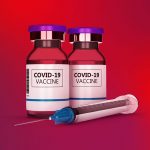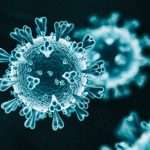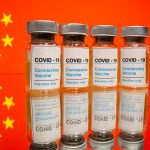
The COVID-19 pandemic, a 21st-century horror. 500+ days of agony for 7.9B people with 171M victims and a death toll of 3.68M worldwide, the novel Coronavirus COVID-19 shook the world upside down. About 5.9% of the world’s total population is fully vaccinated and about 11.5% have been administrated with at least 1st dose. In Pakistan, about 1.1% population has received COVID-19 vaccinations in which about 2.31M people are currently fully vaccinated and around 4.5M are administrated with 1st dose.
According to WHO to stop COVID-19 it will require about 70% of the global population to have immunity. No doubt this pandemic is a new Great Depression and it’s affecting everyone in one way or another.
Vaccines prepare the body’s immune system, trigger it to fight against pathogens – diseases causing organisms. Vaccines mimic the infection which triggers the immune system of the body to produce certain antibodies against infectious pathogens. Conventional vaccines are typically composed of inactivated, weakened, killed pathogen or even a piece of pathogen’s protein, termed as antigen.
RNA Vaccines – mRNA VACCINE
The newest approach is RNA vaccines- the new generation/future vaccines. mRNA (blueprint of protein) is an intermediate product from transcription to translation and it contains the genetic information to guide corresponding proteins formation. mRNA vaccines are acting as a promising alternative to conventional vaccines because they have no potential mutagenesis, have high potency, tend to have rapid development, less manufacturing process, and can feature a long-lasting immune response with safe administration. In RNA vaccines mRNA molecules are synthesized using the DNA template sequence of a particular pathogen in a cell-free system. While in the case of traditional vaccines complex and risky process followed by a growing vast amount of pathogens in mammalian cells or chicken eggs. Thus it promotes contamination chance from infectious molecules or allergens from egg cultures. So, in that case, RNA vaccines don’t follow this procedure thus they are safe, easier, and non-infectious.
Within days of the genetic code of the SARS-CoV-2 virus becoming available, the mRNA code for a candidate vaccine testing was ready. The positive thing is that once the mRNA vaccines tools become viable, mRNA can be quickly tailored for other future pandemics.
Also Read: Rare ‘black fungus’ is infecting COVID patients around the world!
How mRNA Vaccine Works??
COVID-19 mRNA vaccines (Pfizer-BioNTech and Moderna- FDA approved) – mRNA in lipid nanoparticles. Instructions are then given to cells to make a harmless piece termed as ‘spike protein’. The spike protein is present on the surface of the virus that causes COVID-19.
- First, COVID-19 mRNA vaccines are given in the upper arm muscle. Once the instructions (mRNA) are inside the immune cells, the cells tend to make protein pieces. Once it is made, the cell breaks down the mRNA and gets rid of it.
- Then the protein piece is displayed by the cell on its surface. This triggers the body’s immune system to react against that protein as soon as it gets recognized and thus creates an immune response by making antibodies as it happens in natural infection against SARS-CoV-2.
- After this whole process, our body’s immune system memorizes how to react and protect against this infection in the future.
Some CONS regarding mRNA are that effective mRNA delivery into a cell is challenging because RNA sequences and secondary structure is recognizable and destroyed by the innate immune system as soon as they are administrated intravenously. This can be sorted out by optimizing codons using modified nucleosides to avoid recognition and packing RNA into protective nanoparticles (lipid nanoparticles). RNA vaccines do need uninterrupted refrigeration for both storage and transportation. This affects global vaccine distribution for underdeveloped and developing countries. Several types of research are under process about thermostable vaccines and engineers are also working in developing transportation shipping containers using dry ice to deal with uninterrupted refrigeration and shipping constraints while transporting.
Worldwide Used COVID-19 Vaccines
1. Pfizer-BioNTech:
BioNTech, a German company, developed the vaccine and collaborated with Pfizer, an American company, for support with clinical trials, logistics, and manufacturing. This mRNA base COVID-19 vaccine is named BNT162b2. It has 95% efficacy rate based on evidence of clinical trials. It contains 2 shots (21 days apart).
More than 200 million doses of the Pfizer-BioNTech vaccine have been administered worldwide, with no evidence of serious side effects besides anaphylaxis.

2. Moderna:
This mRNA vaccine is manufactured by ModernaTX, Inc. mRNA-1273 is the vaccine candidate which showed promising preliminary results during the phase 3 study with an efficacy of 94.5%. It contains 2 shots (28 days apart).
Pfizer/BioNTech and Moderna are currently two novel type of vaccines made from mRNA, which offer a high level of protection and efficacy to prevent COVID-19 infection among vaccinated individuals.
Also Read: Lipid based Nano-Vaccines – From Cancer to COVID-19
3. Johnson & Johnson- Janssen:
This viral vector-based vaccine is manufactured by Janssen Pharmaceuticals Companies of Johnson & Johnson. The vaccine candidate JNJ-78436735 has an efficacy rate of 66% (globally) -72% (US) relying on clinical trials and vaccine response having a dosage of 1 jab.
4. Oxford- AstraZeneca:
A non-replication viral vector vaccine manufactured by AstraZeneca. The University of Oxford. The vaccine candidate AZD1222 (ChAdox1) has an efficacy rate of 70% – 90 %( after 2nd dose). Its dosage contains 2 shots (6-12 weeks apart).
The risk of clot is roughly one in 100,000 for people in their 40s and rises to one in 60,000 for people in their 30s. So if anyone faced a clotting experience after 1st dose then he/she must avoid receiving 2nd dose.
Vaccine Candidates JNJ-78436735 (Johnson & Johnson- Janssen) & ChAdox1 (Oxford-AstraZeneca) are using adenovirus. Why and what is this?
Adenoviruses are the common cold virus. We as humans have them, monkeys have them, as do other animals. For years, researchers are using these viruses to deliver DNA, which are instructions for proteins. In the case of COVID-19, researchers swap in a gene from SARS-CoV-2. When this vaccine is administrated, the modified cold virus makes the SARS-CoV2 spike protein, which in result stimulates the immune response.
5. Sputnik V:
This non-replication viral vector vaccine is manufactured by Gamaleya Research Institute, Russia. Its vaccine candidate Gam-COVID-Vac has an efficacy rate of 91%-92%. Its dosage contains 2 shorts (3 weeks – 3 months ~under consideration apart).
6. Sinopharm & CoronaVac-Sinovac:
These are two whole virus vaccines that contain inactivated pathogens. Sinopharm manufactured by Beijing Institute of Biological Products, China. BBIBP-CorV vaccine candidate has an efficacy till date is 79% whereas CoronaVac is manufactured by Sinovac Biotech, China. The efficacy rate is now reaching from 50%-66% till now. Both vaccine dosage contains 2 shots (3-4 weeks apart). Booster shots may be required.
7. Novavax:
It’s a protein subunit vaccine meaning harmless pieces of coronavirus spike proteins are used which are grown and then extracted and purified. After that adjuvants (immune-boosting adjuvants) are attached that ultimately triggers the immune system in the body. 95% confidence interval in South Africa trials and 89.3% efficacy in UK trials. Booster shots may be required.
UPDATE : With the help of raw material from CanSino biologics Inc. China, NIH Pakistan locally manufactured COVID-19 vaccine named PakVac – Ad5-nCoV. CanSino has 75% efficacy against symptomatic cases of COVID-19 in Pakistan and it has passed internal QA testing. 3 million doses are expected to produce every month and then administrated accordingly.
Misconceptions:
- Severe Vaccine side effects – A person can suffer from short-time side effects if he/she has no low immunity or any underlying health condition i.e. mild fever, sore arm. But extreme illness is rare. In short, a person is far more likely to be seriously harmed by diseases than by its vaccine.
- No proper clinical Trials – COVID-19 vaccines undergo multiple stages of vaccine trials before making it public globally under standard international safety, ethical and development protocols voluntarily.
- Hot temperature can kill COIVD-19 – You can be a victim of COVID-19 despite of hot weather conditions in respective countries.
- Antibiotics can be helpful – Antibiotics are used against bacterial infections, thus COVID-19 is caused by a virus so antibiotics can’t prevent or treat viral infection.
- Pneumonia Vaccine can prevent COVID-19 – As COVID-19 can trigger respiratory infection and it is also circulated as a severe form of pneumonia but COIVD-19 is a different kind of virus that belongs to a family called Coronaviridae which spread fast and mutate rapidly so variants can be difficult to respond by existing pneumonia vaccines.
- Mineral and Vitamins can cure – Supplements, vitamin C, D, zinc can’t cure COVID-19 but they are important as a supporting mechanism for the proper functioning of low immune system during illness.
- Ultra-violet lamps kill COVID-19 germs – UV lamps can’t promote disinfection on your skin or hands but in fact, they cause skin damage and irritation. You can disinfect your hands by using alcohol-based hand rubs, hand sanitizers, or soap by proper handwashing protocols with clean water.
- 5G mobile networks spread COVID-19 – Keep in mind viruses can’t travel through radio waves or any mobile networks.
- Treating COVID-19 with Hydroxychloroquine – Chloroquine and Hydroxychloroquine can’t treat COVID-19 as they can be useful against malaria and other diseases. No recommendation from WHO as they show no reduction of mortality but it increased risks of nausea, diarrhea, and vomiting.
- mRNA vaccines can alter cell genome – As mRNA is converted into proteins and this whole process occurred in the cytoplasm but keep in mind RNA molecule don’t need to enter into the nucleus, so the integration into the nucleus to change cell’s genome has zero possibility because once protein is made, RNA strands at once degraded by cellular enzymes.
- High risk for Old Age people – COVID-19 can infect people of all ages. Though people over 60 having underlying health conditions or having a disease like diabetes, asthma or cardiovascular diseases are at higher risk because they are more prone due to low immune and health. So no matter how old you are you must follow and practice SOPs directed by WHO.
BOTTOM LINE: Both preclinical and clinical trials have shown that mRNA vaccines for COVID-19 can provide a safe and long-lasting immune response.
![]()

Pursuing MS Industrial Biotechnology from ASAB, NUST, Islamabad. A researcher and content writer, Contributing to broadening the horizon in the respective fields of Nanobiotechnology, Tissue Engineering, Biotechnology and Bioinformatics, Writing for public and worldwide awareness





You can contact me via:
mobeenqureshi1050@gmail.com
Get in touch via:
https://www.linkedin.com/in/muhammad-mobeen-qureshi-8237a1135